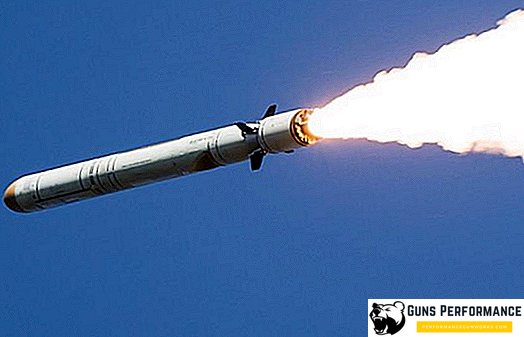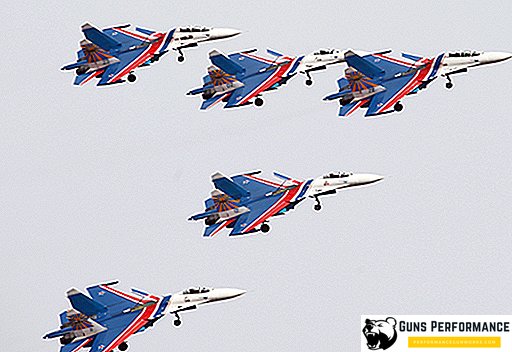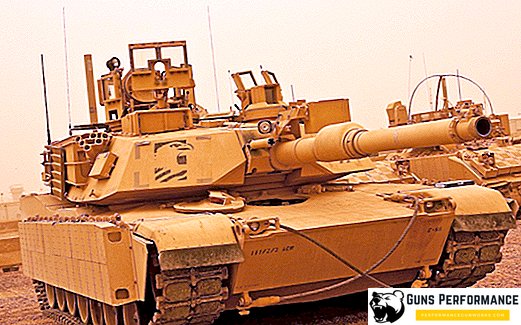Planet Earth, the Solar System, billions of other stars and celestial bodies - all this is our Milky Way galaxy - a huge intergalactic formation, where everything obeys the laws of gravity. Data on what the true dimensions of the galaxy are are only approximate. And the most interesting thing is that there are hundreds, maybe even thousands of such formations, larger or smaller.

Milky Way galaxy and what surrounds it
All celestial bodies, including the Milky Way planets, moons, asteroids, comets and stars, are constantly in motion. Born in the cosmic whirlwind of the Big Bang, all these objects are in the way of their development. Some have a more ancient age, others - obviously younger.

Feel visually galactic boundaries impossible. Just 100 years ago, the scientific world did not even suspect that our Milky Way galaxy is not the only one in the Universe. Only thanks to the efforts of the Americans Edwin Hubble, it became clear that the Universe is literally crammed with gravitational formations. There are very small galaxies among them, there are medium-sized ones like ours, and there are real giants. A vivid example is the Andromeda galaxy nearest to the Milky Way, which is 2-2.5 times larger. As for the dwarf galaxies, their fate is unenviable. They had the role of being companions of larger formations, which would later swallow them.

Our intergalactic metropolis in the company of the Andromeda and Triangle galaxies form the Local Group, which, respectively, is already part of a larger formation - the Local Virgo Supercluster.
Key Features and Parameters
The Milky Way is a typical SBbc class spiral galaxy with a jumper. The diameter of the Milky Way is 100 thousand light years. Within these boundaries, there are from 200 to 400 billion stars of various types, each of which is at a certain stage of its development. The thickness of the galactic disk varies over 1000 light years.

The mass of the Milky Way galaxy includes not only the mass of stars. Most of the galactic disk is the mass of dark matter and interstellar gas. All this together constitutes an enormous weight of 4.8 · 10¹¹ M☉. In other words, the Milky Way is 150 billion times heavier than our Sun.

The gravitational formation rotates around the center, while individual parts of the galaxy rotate at different speeds. If at the center the speed of rotation of the galactic disk is fairly moderate, then at the periphery this parameter reaches 200-250 km / s. On one of these sites, closer to the center of the galactic disk, the Sun is located. The distance from it to the center of the galaxy is 25-28 thousand light years. A complete rotation around the central axis of the gravitational formation of the Sun and the Solar System make for 225-250 million years. Accordingly, in the entire history of its existence, the Solar system only circled around the center 30 times.
The place of the galaxy in the universe
It should be noted one remarkable feature. The position of the Sun and, accordingly, the planet Earth is very convenient. In the galactic disk, the process of compaction constantly occurs. This mechanism is caused by the discrepancy between the speed of rotation of spiral branches and the movement of stars that move within the galactic disk according to their laws. Vibrant processes occur during compaction, accompanied by intense ultraviolet radiation. The sun and the earth are comfortably located in the corotation circle where there is no such vigorous activity: between two spiral branches on the border of the sleeves of the Milky Way - Sagittarius and Perseus. This explains the calm in which we have been so long. For more than 4.5 billion years, cosmic cataclysms have not affected us.
The structure of the Milky Way galaxy
The galactic disk is not homogeneous in composition. Like other spiral gravity systems, the Milky Way has three distinct areas:
- core formed by a dense star cluster numbering a billion stars of different ages;
- the galactic disk itself, formed from clusters of stars, stellar gas and dust;
- corona, spherical halo - an area in which globular clusters are located, dwarf galaxies, separate groups of stars, cosmic dust and gas.

Near the plane of the galactic disk are young stars collected in clusters. The density of star clusters in the center of the disk is higher. Near the center, the density is 10,000 stars per cubic parsec. In the region where the Solar System is located, the star density is already 1-2 stars in 16 cubic parsec. As a rule, the age of these celestial bodies is no more than several billion years.
Interstellar gas also concentrates around the plane of the disk, obeying centrifugal forces. Despite the constant speed of rotation of the spiral branches, the interstellar gas is unevenly distributed, forming large and small cloud zones, nebulae. However, the main galactic building material is dark matter. Its mass prevails over the total mass of all celestial bodies that make up the Milky Way galaxy.

If the galaxy structure is clear and transparent in the diagram, then in reality it is almost impossible to consider the central regions of the galactic disk. Gas and dust clouds and clusters of stellar gas hide from our view the light from the center of the Milky Way, in which a real space monster lives - a supermassive black hole. The mass of this supergiant is approximately 4.3 million M. Next to the supergiant is a smaller black hole. Complements this gloomy company hundreds of dwarf black holes. The black holes of the Milky Way are not only devourers of stellar matter, but also perform the function of the maternity hospital, throwing huge clots of protons, neutrons and electrons into space. It is from them that atomic hydrogen is formed - the main fuel of the star tribe.
The jumper is a bar located in the region of the galactic nucleus. Its length is 27 thousand light years. Old stars reign here, red giants, whose black matter feeds on stellar matter. The main part of molecular hydrogen, which is the main building material of the star formation process, is concentrated in this area.

Geometrically, the structure of the galaxy looks quite simple. Each spiral arm, and there are four of them at the Milky Way, originates from a gas ring. Sleeves diverge at an angle of 20⁰. At the outer boundaries of the galactic disk, the main element is atomic hydrogen, which propagates from the center of the galaxy to the periphery. The thickness of the hydrogen layer on the outskirts of the Milky Way is much wider than in the center, while its density is extremely low. The discharge of the hydrogen layer is promoted by the impact of dwarf galaxies, which have been continuously inseparable from our galaxy for tens of billions of years.
Theoretical models of our galaxy
Even the ancient astronomers tried to prove that the visible band in the sky was part of a huge stellar disk, rotating around its center. This statement was facilitated by conducted mathematical calculations. It was possible to get an idea of our galaxy only thousands of years later, when instrumental methods of space exploration came to help science. A breakthrough in the study of the nature of the Milky Way was the work of the Englishman William Herschel. In 1700, he was able to empirically prove that our galaxy has a disk shape.

Already in our time, research has taken a different turn. Scientists relied on the comparison of the motion of stars, between which there was a different distance. Using the parallax method, Jacob Kaptein was able to roughly determine the diameter of a galaxy, which, according to his calculations, is 60-70 thousand light years. Accordingly, the place of the Sun was determined. It turned out that it is located relatively far from the raging center of the galaxy and at a decent distance from the periphery of the Milky Way.

The fundamental theory of the existence of galaxies is the theory of American astrophysics Edwin Hubble. He had the idea to classify all gravitational formations, dividing them into elliptical galaxies and spiral-type formations. The last, spiral galaxies represent the most extensive group, which includes formations of various sizes. The largest of the recently discovered spiral galaxies is NGC 6872, whose diameter exceeds 552 thousand light years.
Expected future and forecasts
The Milky Way Galaxy looks like a compact and ordered gravitational formation. Unlike its neighbors, in our intergalactic home is rather calm. Black holes systematically affect the galactic disk, reducing it in size. This process has already lasted for tens of billions of years, and it is unknown how long it will continue The only threat that hangs over our galaxy comes from its nearest neighbor. The Andromeda Galaxy is rapidly approaching us. Scientists suggest that the collision of two gravitational systems can occur in 4.5 billion years.

Such a meeting-merger will mark the end of the world in which we used to live. The smaller Milky Way will be absorbed by a larger formation. Instead of two large spiral formations in the Universe a new elliptical galaxy will appear. Until this time, our galaxy will be able to deal with its satellites. Two dwarf galaxies — the Large and Small Magellanic Clouds — will consume the Milky Way in 4 billion years.












